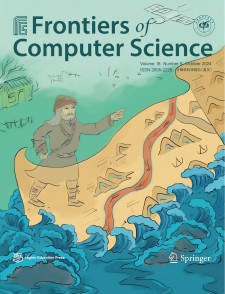用于连接组学图像分割的深度全残差卷积神经网络
IF 4.6
3区 计算机科学
Q2 COMPUTER SCIENCE, INFORMATION SYSTEMS
引用次数: 192
摘要
细胞分辨率连接组学是一个雄心勃勃的研究方向,其目标是使用高通量、纳米级电子显微镜生成全面的大脑连接图。连接组学研究的主要挑战之一是开发需要最小用户干预的可扩展图像分析算法。深度学习在计算机视觉的图像分类任务中提供了卓越的性能,导致了最近的流行。同样,将其应用于连接组分析也大有希望。在这里,我们介绍了一种深度神经网络架构FusionNet,重点介绍了它在连接组学数据中实现神经元结构自动分割的应用。FusionNet结合了机器学习的最新进展,如语义分割和残差神经网络,以及基于求和的跳过连接。这将产生更深层次的网络架构,并提高分割精度。通过与其他几种流行的电子显微镜分割方法进行比较,我们证明了该方法的性能。我们通过两种不同任务的分割结果进一步说明了它的灵活性:细胞膜分割和细胞核分割。本文章由计算机程序翻译,如有差异,请以英文原文为准。
FusionNet: A Deep Fully Residual Convolutional Neural Network for Image Segmentation in Connectomics
Cellular-resolution connectomics is an ambitious research direction with the goal of generating comprehensive brain connectivity maps using high-throughput, nano-scale electron microscopy. One of the main challenges in connectomics research is developing scalable image analysis algorithms that require minimal user intervention. Deep learning has provided exceptional performance in image classification tasks in computer vision, leading to a recent explosion in popularity. Similarly, its application to connectomic analyses holds great promise. Here, we introduce a deep neural network architecture, FusionNet, with a focus on its application to accomplish automatic segmentation of neuronal structures in connectomics data. FusionNet combines recent advances in machine learning, such as semantic segmentation and residual neural networks, with summation-based skip connections. This results in a much deeper network architecture and improves segmentation accuracy. We demonstrate the performance of the proposed method by comparing it with several other popular electron microscopy segmentation methods. We further illustrate its flexibility through segmentation results for two different tasks: cell membrane segmentation and cell nucleus segmentation.
求助全文
通过发布文献求助,成功后即可免费获取论文全文。
去求助
来源期刊

Frontiers of Computer Science
COMPUTER SCIENCE, INFORMATION SYSTEMS-COMPUTER SCIENCE, SOFTWARE ENGINEERING
CiteScore
8.60
自引率
2.40%
发文量
799
审稿时长
6-12 weeks
期刊介绍:
Frontiers of Computer Science aims to provide a forum for the publication of peer-reviewed papers to promote rapid communication and exchange between computer scientists. The journal publishes research papers and review articles in a wide range of topics, including: architecture, software, artificial intelligence, theoretical computer science, networks and communication, information systems, multimedia and graphics, information security, interdisciplinary, etc. The journal especially encourages papers from new emerging and multidisciplinary areas, as well as papers reflecting the international trends of research and development and on special topics reporting progress made by Chinese computer scientists.
 求助内容:
求助内容: 应助结果提醒方式:
应助结果提醒方式:


